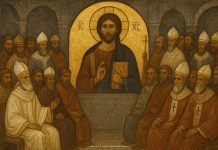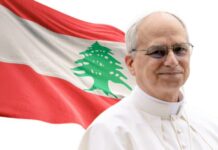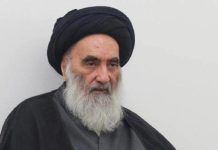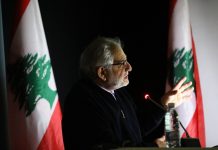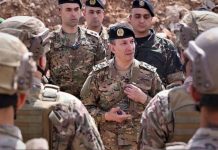To Kurdistan and Back: Iran’s Forgotten Front
David Pollock/The Washington Institute/March 01/17
At a conference in Dahuk in the Kurdistan Region of Iraq a few weeks ago, I was intrigued to see the leader of the Kurdish Democratic Party of Iran (KDP-I) — which the Tehran regime considers a subversive, terrorist group — address the assembled notables. Sitting in the front row were three of the most senior political and security officials of the Kurdistan Regional Government (KRG). The scene made me a bit nervous about possible Iranian reprisals, so I asked if I could report it. “Certainly,” I was told, “it’s already all over the local media.”
But sure enough, a few days later, unknown assailants attacked a KDP-I office inside Iraqi Kurdistan, killing seven people. The attack was all the more egregious as it took place not near the Iranian border, but in the town of Koy Sanjaq, right in the middle of the Kurdistan region. No one has been publicly charged with the killings, nor has the KRG even publicly blamed them on Iranian agents. The incident chillingly illustrates the nature and reach of Iran’s influence in Iraqi Kurdistan: if you cross us too much, we will kill you.
Beyond such extreme but isolated events, the specter of Iran looms very large over the much bigger question of Kurdish independence. Iran continues to voice its firm opposition to this option — most recently this past week, during a visit of Kurdistan’s Islamic party leaders to Tehran. In a telling contrast, for at least the past year, KRG president Masoud Barzani has refused a standing invitation to visit the Iranian capital, reportedly in part because Iran has so far refused to fly the Kurdish flag in official welcome.
In fact, during my recent visit, a top KRG official privately revealed an acute insight into how deeply the Iran factor cuts in this context. Kurdistan’s leaders lately aver that they prefer, not unilateral steps toward independence, but negotiations with Baghdad over new terms of coexistence, confederation, or separation. But when they say Baghdad, this official told me, they really mean Tehran. That is because the Kurds see the Iraqi government as essentially subservient to Iran. Whatever Baghdad may ultimately be willing to grant the Kurds will reflect Tehran’s decision.
On a more mundane level, Iran exercises considerable direct economic leverage in Kurdistan as well. The region’s main economic lifeline, oil, literally runs through Turkey rather than Iran. Desultory negotiations over a new oil pipeline to Iran continue, so far to no practical effect. But other trade with Iran, particularly imports of food staples and other basic consumer goods, is also a key stabilizing factor in the day-to-day economic life of the Kurdistan region. Two-way truck trade in oil products remains significant as well. Iran has been known to close the border, or drastically slow down traffic there, as a form of political signaling and pressure.
Conversely, Kurdish friends in the local business community tell me that Iran has offered them free merchandise (otherwise known as bribes) if they agree to promote or at least turn a blind eye to Tehran’s activities in the region. On a much larger level, Tehran is trying to tempt the KRG with talk of a hypothetical pipeline from Kurdish oil fields to Iran. At the same time, it threatens the KRG with talk of a different hypothetical pipeline, this time from Kirkuk directly to Iran — but bypassing Kurdish control.
The extent of Iranian influence is particularly evident in Sulaymaniyah province, which borders Iran and is dominated politically by the Patriotic Union of Kurdistan (PUK) and its splinter Gorran Party. Both of those parties have closer historical and personal ties to Tehran than does the rival Kurdistan Democratic Party (KDP), based in the western provinces of Erbil and Dahuk near the Turkish border. In 2011, while visiting Sulaymaniyah, I heard a top Gorran official say that in his province alone, “Iranian agents have 700 safe houses.” Momentarily stunned by this huge number, I asked, “What are they doing in all those places?!” His laconic answer was instructive: “Well, if I knew the answer to that question, they wouldn’t be safe houses, would they?”
Today, Iran’s threatening presence in Sulaymaniyah has, if anything, changed further for the worse. Just this week, to cite but one example, an outspoken anti-Iranian member of the Iraqi parliament, Mithal al-Alusi, told the author that he would not even travel to Sulaymaniyah without a whole convoy of bodyguards. More broadly, Iran is exploiting these intra-Kurdish divisions in order to accomplish two related objectives: increase its own influence, through PUK-affiliated and other factional friends, as far afield as the Turkish border; and decrease the KRG’s ability to present a unified front in negotiating on behalf of its legitimate interests, whether for eventual independence or merely for more secure political and economic autonomy.
For U.S. policy, especially now that the Trump administration seems poised to take a tougher line toward Tehran, this close but tense relationship between Iraqi Kurdistan and Iran poses an intriguing conundrum. On the one hand, the KRG seems to offer a prime opportunity, with strong local support, to counter and perhaps even roll back Iranian regional influence. Doing so could have ripple effects far beyond the KRG itself, weakening the chain of proxies Tehran has created from Iran through Iraq and on to Syria, Lebanon, and the Mediterranean coast. On the other hand, such a forward U.S. policy would probably require a larger commitment to protect the Kurds from Iranian threats. And it could raise the issue of Kurdish independence as the next logical step in this sequence, with all of the complications that might entail.
That is why, as one senior KRG official put it on my recent visit, “In some short-term sense, it makes life easier for us if the U.S. and Iran are not in a state of active confrontation.” Yet if the United States is indeed now determined to stand up more strongly against Iran’s regional challenges, while maintaining a crucial ally and buffer against the Islamic State and other violent extremists, Kurdistan would be an excellent place to start. The first step should be a simple, firm assurance to the friendly KRG leadership that Washington will unequivocally back their indigenous efforts to check Iranian subversion, intimidation, and power projection on Kurdish soil. The second step should be a clear U.S. offer to keep a substantial military presence inside the KRG even after victory against the Islamic State — and even if Baghdad declines a parallel offer. After that, U.S. partnership with the KRG and others in pushing back against Iranian encroachments, not just in Kurdistan but around the region, will become increasingly effective, and decreasingly risky.
http://www.washingtoninstitute.org/fikraforum/view/to-kurdistan-and-back-irans-forgotten-front
**David Pollock is the Kaufman Fellow at The Washington Institute, focusing on regional political dynamics and related issues.
من كردستان وإليها: جبهة إيران المنسية
ديفيد بولوك/معهد واشنطن لسياسة الشرق الأدنى/01 آذار/17
بينما كنت أحضر مؤتمرًا في دهوك، في “إقليم كردستان العراق” قبل بضعة أسابيع، أثارت اهتمامي رؤية رئيس “الحزب الديمقراطي الكردستاني الإيراني” – الذي يعتبره نظام طهران مجموعة تخريبيةً وإرهابية – يلقي خطابًا أمام الأعيان المجتمعين. وفي الصف الأمامي، كان يجلس ثلاثة من أبرز المسؤولين السياسيين والأمنيين في “حكومة إقليم كردستان”. أثار هذا المشهد توتّري بعض الشيء إزاء احتمال أي ردود فعل انتقامية عن إيران، فسألت ما إذا كان باستطاعتي تغطية الحدث، فجاء الردّ إيجابيًا “طبعًا، لقد انتشر الخبر أساسًا في كافة وسائل الإعلام المحلية”.
ولكن، كما كان متوقّعًا، وبعد أيام قليلة، شنّ مسلّحون مجهولون اعتداءً على مكتب “الحزب الديمقراطي الكردستاني الإيراني” في “إقليم كردستان العراق” وقتلوا سبعة أشخاص. وما جعل هذا الهجوم أفظع بعد أنه لم يقع على مقربة من الحدود مع إيران، بل في قرية كوي سنجق في وسط “إقليم كردستان”. لم يُتّهم علنًا أي طرف بتنفيذ الهجوم وحتى أن “حكومة إقليم كردستان” لم توجّه أصابع الاتهام نحو عملاء إيران. ويعكس هذا الحدث باختصار وبشكل مخيف طبيعة النفوذ الإيراني وامتداده في كردستان العراق: إن تخطيتمونا، سوف نقتلكم.
وفي أفق هذه الأحداث المتطرفة إنما المنفصلة الواحدة عن الأخرى، يهيمن شبح إيران بقوة على مسألة استقلال كردستان الأهم. فإيران لا تكفّ عن التعبير عن رفضها الحازم لهذا الخيار – وقد تجلى ذلك مؤخرًا الأسبوع الماضي خلال زيارة مسؤولين في “الحزب الإسلامي الكردستاني” إلى طهران. وفي تناقض صارخ، رفض رئيس “حكومة إقليم كردستان” مسعود بارزاني، خلال السنة الماضية على الأقل، دعوة ما زالت قائمةً لزيارة العاصمة الإيرانية، وتردد أن السبب يُعزى جزئيًا إلى رفض إيران حتى الآن رفع العلم الكردستاني في خلال مراسم الاستقبال الرسمي.
وفي الواقع، خلال زيارتي الأخيرة، أفصح لي مسؤول رفيع المستوى في “حكومة إقليم كردستان” في مجلس خاص عن معلومات داخلية دقيقة حول مدى تأثير العنصر الإيراني في هذا السياق. ومؤخرًا أكّد مسؤولو “إقليم كردستان” على أنهم لا يرغبون في اتخاذ خطوات من طرف واحد للحصول على الاستقلال بل يرغبون في التفاوض مع بغداد حول شروط جديدة للتعايش أو الاتحاد أو الانفصال. لكنّ المسؤول نفسه أخبرني أنه عندما يقولون بغداد، فإنهم في الواقع يقصدون طهران، وذلك لأن الأكراد يعتبرون الحكومة العراقية خاضعة بالكامل لإيران. وبتعبير آخر، كلّ ما قد تمنحه بغداد في نهاية المطاف للأكراد سيعكس قرار طهران.
وعلى صعيد دنيوي أكثر، تمارس إيران سلطةً اقتصادية مباشرة لا يستهان بها على كردستان أيضًا. فشريان المنطقة الاقتصادي الرئيسي، أي النفط، يمرّ في تركيا فعليًا بدلًا من إيران. أما المفاوضات غير المنهجية حول إنشاء شبكة أنابيب جديدة تمرّ في إيران، فلم تترك أي أثر عملي حتى الآن. غير أن التبادلات التجارية الأخرى مع إيران، لا سيما استيراد المواد الغذائية الأساسية وسلع استهلاكية أخرى، تُعتبر عاملًا أساسيًا لإرساء الاستقرار في الحياة الاقتصادية اليومية في “إقليم كردستان”. كما تكتسب حركة الشاحنات المحمّلة بالمنتجات النفطية من الإقليم وإليه أهميةً. ولطالما عمدت إيران إلى إقفال الحدود أو إبطاء حركة التنقل فيه بشكل كبير كوسيلة لممارسة الضغوط وتمرير الإشارات على الصعيد السياسي.
في المقابل، أفصح لي أصدقاء أكراد من مجتمع الأعمال المحلي أن إيران عرضت عليهم سلعًا مجانية (أو رشاوى بتعبير آخر) مقابل موافقتهم على دعم أنشطة طهران في المنطقة أو على الأقل غضّ البصر عنها. وفي إطار أوسع بكثير، تحاول طهران استمالة “حكومة إقليم كردستان” من خلال حديثها عن إنشاء شبكة أنابيب افتراضية من حقول النفط الكردية إلى إيران، لكنّها وفي الوقت عينه، تهددها بالحديث عن إنشاء شبكة أنابيب افتراضية مختلفة تمتد هذه المرة من كركوك مباشرة إلى إيران – إنما عبر تجاوز سيطرة الأكراد.
ويظهر امتداد النفوذ الايراني جليًا بشكل خاص في محافظة السليمانية التي تقع على الحدود مع إيران وتخضع سياسيًا لهيمنة “الاتحاد الوطني الكردستاني” و”حركة التغيير” (كوران) المنشقّة عنه. وتربط الحزبين علاقات تاريخية وشخصية بطهران أقوى من تلك التي تجمع العاصمة الإيرانية “بالحزب الديمقراطي الكردستاني” المنافس والمتمركز في محافظتي إربيل ودهوك الواقعتين غرب البلاد بالقرب من الحدود التركية. وفي عام 2011، خلال زيارتي إلى السليمانية، سمعت أحد أبرز المسؤولين في “حركة التغيير” يقول إنه في السليمانية وحدها، “يملك العملاء الإيرانيون 700 منزل آمن”. وإذ فاجأني هذا الرقم المرتفع، سألته: “وماذا عساهم يفعلون في هذه الأماكن كلّها؟” فحملت إجابته المختصرة الكثير من المعاني: “لو كنتُ أعلم الإجابة، لما كانت هذه المنازل آمنة، أليس كذلك؟”
أما اليوم، فإن وجود إيران الذي يطرح تهديدات كثيرة في السليمانية، تبدّل نحو الأسوأ. فخلال هذا الأسبوع فقط، علمًا بأنني سأكتفي بذكر مثال واحد، أفصح عضو في البرلمان العراقي الذي يعادي إيران علنًا، وهو مثال الآلوسي، للمؤلف عن أنه لا يجرؤ على السفر إلى السليمانية حتى من دون أن يرافقه موكب كبير من الحراس الشخصيين. وفي إطار أوسع، ما زالت إيران تستغل هذه الانقسامات الداخلية بين الأكراد لتحقيق هدفين مترابطين هما: زيادة نفوذها عن طريق أصدقاء تابعين لـ “الاتحاد الوطني الكردستاني” ولفصائل أخرى، كي يصل حتى الحدود التركية؛ وتقويض قدرة “حكومة إقليم كردستان” على تشكيل جبهة موّحدة للتفاوض بشأن مصالحها الشرعية، سواء لجهة المطالبة بالاستقلال في نهاية المطاف أو ببساطة من أجل تأمين حصولها على الاستقلال السياسي والاقتصادي.
أما بالنسبة إلى سياسة الولايات المتحدة، لا سيما بعد أن بدت إدارة الرئيس دونالد ترامب الأمريكي مستعدة لاعتماد موقف أكثر تشددًا إزاء طهران، فقد باتت العلاقة الوطيدة إنما المتوترة بين كردستان العراق وإيران تطرح لغزًا محيرًا. فمن جهة، يبدو أن “حكومة إقليم كردستان” تقدّم فرصةً كبيرة، مستفيدة من دعم محلي قوي، للحدّ من النفود الإيراني على المنطقة أو حتى دحره. وإن فعلت ذلك، قد تبرز تأثيرات متسلسلة تتخطى “إقليم كردستان” بذاته، ما يضعف سلسلة العملاء التي أسستها طهران بدءًا من إيران مرورًا بالعراق ووصولًا إلى سوريا ولبنان وساحل المتوسط. ومن جهة أخرى، قد يتطلّب اعتماد الولايات المتحدة سياسة صريحة مماثلة على الأرجح التزاماً أكبر بحماية الأكراد من التهديدات الإيرانية. وقد يجعل ذلك مسألة استقلال الأكراد الخطوة المنطقية التالية ضمن هذا التسلسل، مع كل التعقيدات التي قد يحملها هذا الأمر.
لذلك، كما قال أحد المسؤولين البارزين في “حكومة إقليم كردستان” خلال زيارتي الأخيرة: “على المدى القصير، قد تصبح حياتنا أسهل إذا لم تدخل الولايات المتحدة وإيران في مواجهة مباشرة”. ولكن، في حال أصرّت الولايات المتحدة الآن فعلًا على الوقوف في وجه تحديات إيران في المنطقة، مع الحفاظ في الوقت عينه على حليف أساسي وحصن ضد “داعش” وجماعات متطرّفة أخرى، لن تجد مكانًا أفضل من كردستان لإطلاق حملتها. ويجب أن تتمثّل الخطوة الأولى بطمأنة بسيطة وحازمة لقيادة “حكومة إقليم كردستان” الصديقة بأن واشنطن ستدعم بشكل صريح جهودهم المحلية لتقويض الأعمال التخريبية والترهيب وبسط النفوذ الذي تمارسه إيران على الأراضي الكردية. أما الخطوة الثانية، فقد تحمل عرضًا أمريكيًا واضحًا بالإبقاء على وجود عسكري كبير داخل “حكومة إقليم كردستان” حتى بعد الانتصار على “داعش” – وحتى لو رفضت بغداد عرضًا موازيًا. بعد ذلك، تصبح الشراكة بين الولايات المتحدة و”حكومة إقليم كردستان” وأطراف أخرى للحدّ من الانتهاكات الإيرانية، ليس في إقليم كردستان وحسب، بل في المنطقة أيضًا، أكثر فاعلية وأقل خطرًا.
*ديفيد بولوك زميل أقدم في معهد واشنطن يركز على الحراك السياسي في بلدان الشرق الأوسط.
*منتدى فكرة هو مبادرة لمعهد واشنطن لسياسة الشرق الأدنى. والآراء إلى يطرحها مساهمي المنتدى لا يقرها المعهد بالضرورة، ولا موظفيه ولا مجلس أدارته، ولا مجلس مستشاريه، وإنما تعبر فقط عن رأى صاحبها.





